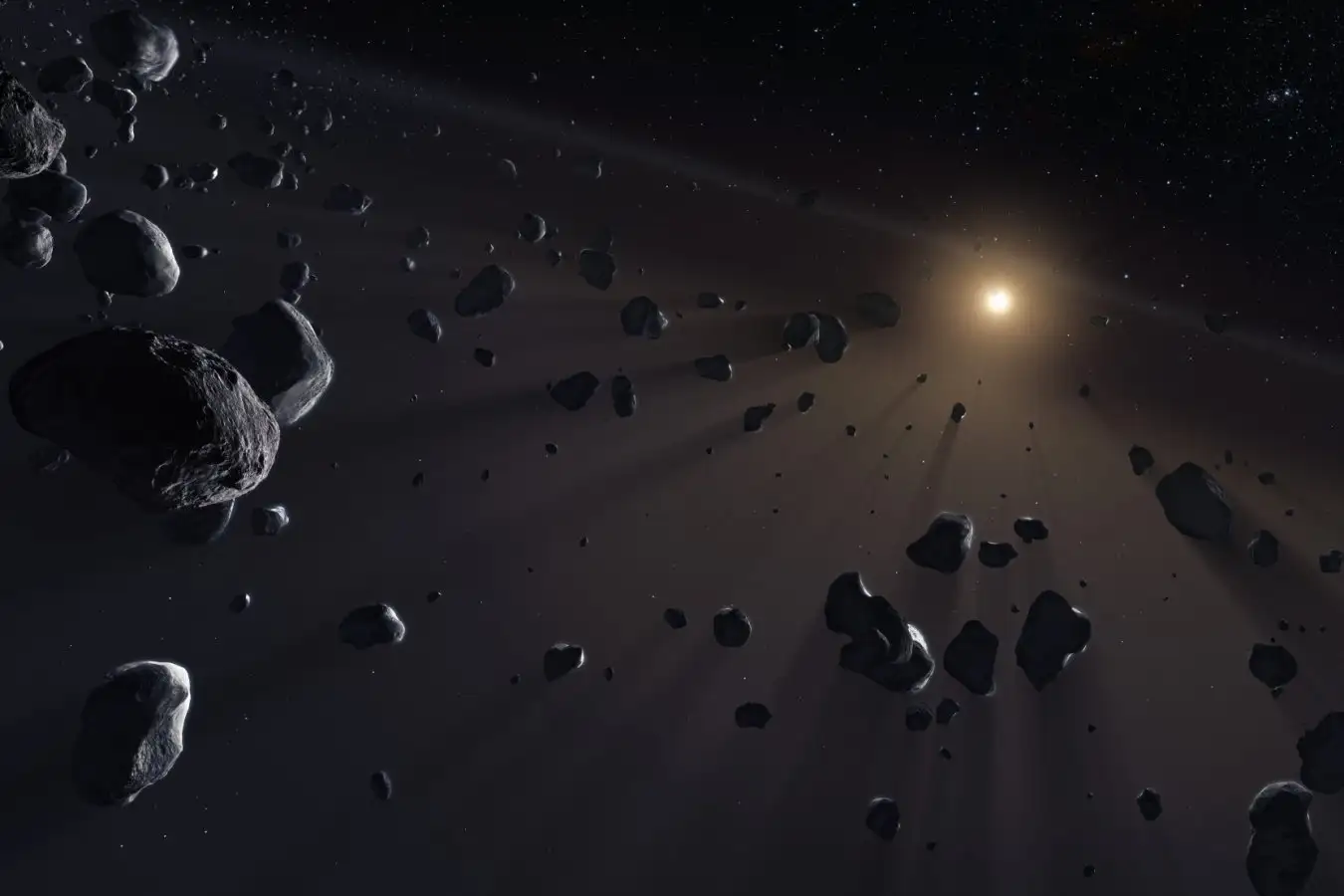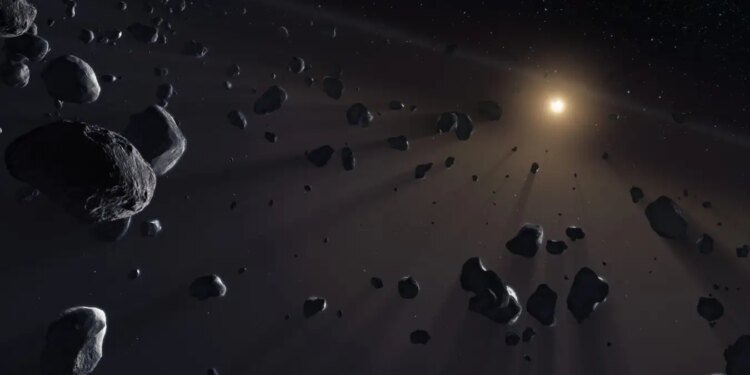
An artist’s impression of the Kuiper belt
ESO/M. Kornmesser
The Kuiper belt, a disc of icy rocks on the outermost edges of the solar system, seems to have more structure than we thought. In 2011, researchers found a cluster of objects there on similar orbits that they dubbed the “kernel” of the Kuiper belt – now, another team has spotted an even more compact cluster of objects that they are calling the “inner kernel”.
The original kernel was found by eye using plots of the orbits of 189 Kuiper belt objects (KBOs). It is about 44 astronomical units from the sun, where one astronomical unit is the distance between the sun and Earth. Since the discovery of the kernel, no additional structures have been found in the Kuiper belt.
That is, until Amir Siraj at Princeton University in New Jersey and his colleagues took on the painstaking task of refining the orbital data from 1650 KBOs and feeding it into an algorithm that searches for clustering and structure. They trained the algorithm to search for the kernel, and then examined the results to see if there were any more structures out there. “The kernel was never found alone – whenever the algorithm found the kernel, it found another group as well,” says Siraj.
The researchers called this newfound cluster the inner kernel because of its location about 43 astronomical units from the sun. All of the objects in the inner kernel have remarkably circular orbits, almost completely in line with the disc of the solar system.
“That kind of orbital calmness is a signal of a very old, undisturbed structure – the kind of structure that can provide clues to the evolution of the solar system, how the giant planets have moved in their orbits, what kind of interstellar environments the solar system has been through, all sorts of things about the early days of the solar system,” says Siraj.
It could be particularly enlightening when it comes to learning about Neptune’s migration from the inner solar system, where it is thought to have formed, out to its current position, says David Nesvorný at the Southwest Research Institute in Colorado, one of the discoverers of the original kernel. Nesvorný says it is possible that as Neptune was moving outward, the KBOs that make up the kernel and inner kernel were briefly captured in place through gravitational interactions with the giant planet, causing the clumping that we see now, before being released as Neptune continued on its way.
The Vera C. Rubin Observatory in Chile, which began operations this year, is expected to find many more KBOs than we know of now, which should tell us more about the kernel and inner kernel, as well as whether there are any other as-yet-undiscovered structures on the solar system’s edge. “The more we learn about the architecture of the Kuiper belt, the more we learn about the solar system’s history,” says Siraj.
Topics:
Source link : https://www.newscientist.com/article/2504973-weve-found-an-unexpected-structure-in-the-solar-systems-kuiper-belt/?utm_campaign=RSS%7CNSNS&utm_source=NSNS&utm_medium=RSS&utm_content=home
Author :
Publish date : 2025-11-19 20:00:00
Copyright for syndicated content belongs to the linked Source.












